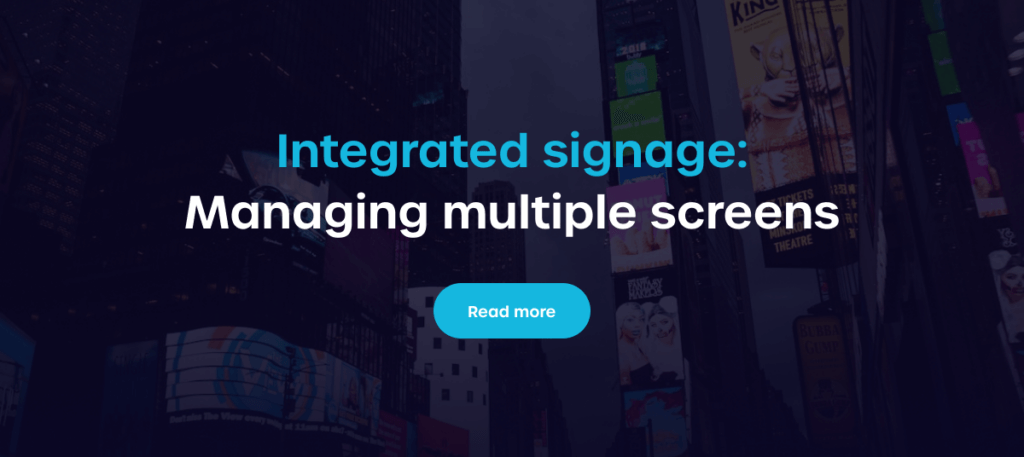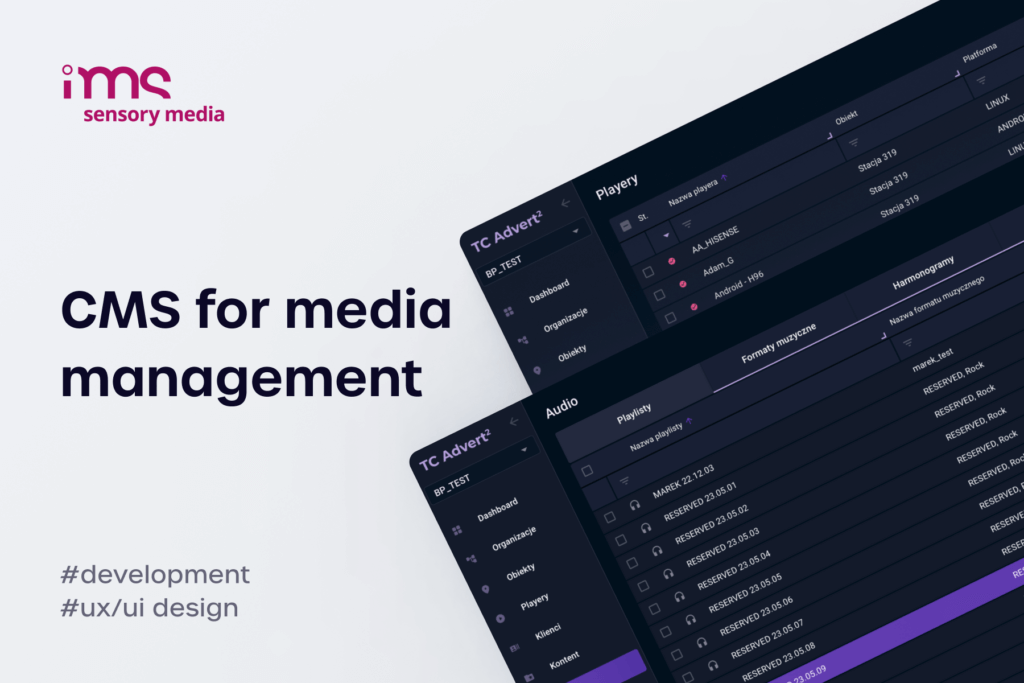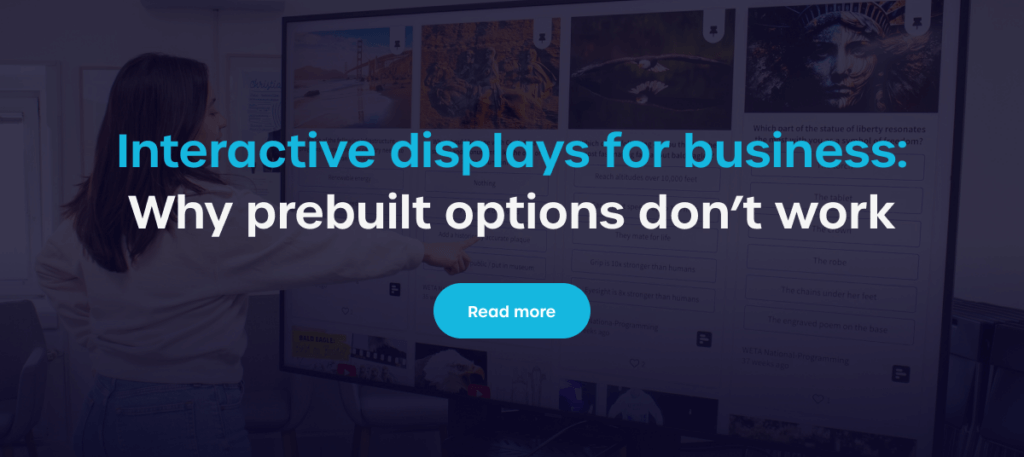Choosing the right path for your digital signage software development can make or break the success of your display network. Businesses face a key decision: invest in a ready-made solution or build a custom platform tailored to their needs. Each option offers distinct advantages depending on budget, timeline, and long-term goals. This article explores both approaches to help you make an informed choice. Whether you’re launching a new signage system or scaling an existing one, understanding the differences is essential.
Evaluating ready-made digital signage software
When it comes to choosing a digital signage system, evaluating ready-made software is crucial. Many businesses opt for prebuilt solutions due to their quick deployment and established features.
Important features of commercial software
When selecting a commercial digital signage software, like BrightSign or Xibo, it is essential to consider several key features to ensure it meets your business needs. The most important ones typically include:
- User Interface – easy-to-navigate interfaces help in managing content efficiently.
- Content Management – strong content management systems allow for scheduling and organizing displays seamlessly.
- Compatibility – ensure the software is compatible with various hardware and media devices.
These features not only enhance daily operations but also contribute to long-term scalability and ease of maintenance. Selecting software that aligns with your team’s technical capabilities and display goals will ensure smoother deployments and better audience engagement.
Cost analysis of prebuilt solutions
Cost plays a significant role in the decision-making process for an integrated signage project, and thoroughly analyzing the expenses of prebuilt solutions is essential. While the initial investment may appear lower, ongoing subscription fees or limitations can diminish long-term value.
It's important to evaluate the upfront purchase price in relation to recurring costs, as well as to consider potential hidden fees for updates, maintenance, or integrations. For example, most ready-made digital signage solutions charge between $5 and $18 per screen per month for software licensing, depending on the provider and features. The cost might seem pretty low, but remember - usually your digital signage network will be much bigger than one screen. This will increase the cost significantly.
Maintenance costs can vary but are typically bundled into the software subscription or priced separately if hardware support is required. Additionally, assessing the expected return on investment helps determine how quickly the solution can generate value and offset its overall cost.
Integration with existing systems
To ensure a smooth experience, integrating pre-built digital signage systems with your existing technological infrastructure is crucial. It's important to consider how well the software aligns with your current tools, such as customer databases and content creation platforms.
Assess the compatibility of the solution with your hardware and software to avoid unexpected issues. Real-time data flow between systems should be supported to keep your interactive displays for business accurate and relevant. Additionally, evaluating the technical requirements and the level of support available can help streamline the implementation process.

Benefits of custom digital signage software development
Investing in custom digital signage software development can provide businesses with many advantages. This tailored approach allows organizations to create a digital signage system that fully aligns with their unique needs and operational goals.
Tailored features for unique needs
A key benefit of custom digital signage software is the ability to incorporate tailored features specific to your business requirements. This customization can significantly enhance user experience and ensure that the system meets all operational demands.
- Personalization - design specific features that cater uniquely to targeted audiences.
- Branding - customize visuals and content to align with your brand’s identity.
- Functional Enhancements - develop additional functionalities that support unique business processes.

Scalability and flexibility
Custom digital signage software offers enhanced scalability and flexibility, enabling your system to evolve alongside your business. As your organization grows, the software can be tailored or expanded without requiring major structural changes.
This adaptability allows you to introduce new features, support multiple locations with varied setups, and stay aligned with emerging technologies. By choosing a custom solution, you're building a foundation that can keep pace with both your current needs and future demands.
Enhanced support and maintenance options
Custom solutions also provide enhanced support and maintenance options that can be tailored to suit your operational requirements. With dedicated support teams familiar with your specific digital signage software development, resolution times can drastically improve, leading to minimal downtime. These benefits often include:
- Technical Support - access to specialized technical assistance whenever issues arise.
- Regular Updates - ensure the system remains up-to-date with the latest features and security patches.
- Personalized Training - equip your team with tailored training programs specific to the custom software solutions.
By having these services built around your unique setup, you can maintain high performance and adapt more quickly to changes in your business or technology.

Choosing the right option for your business
Selecting the right digital signage option involves a careful consideration of your business's needs and capabilities. The choice between ready-made and custom solutions can significantly affect both short-term and long-term effectiveness.
Assessing your budget and resources
A crucial step in choosing between ready-made and custom digital signage software is assessing your budget and available resources. Ready-made solutions often have lower upfront costs and faster deployment but may come with recurring subscription fees and limited customization. In contrast, custom development requires a higher initial investment but offers long-term value through flexibility and scalability tailored to your needs. Key budget considerations include:
- Budget Constraints - determine if your finances allow for a larger upfront investment (custom) or favor smaller, ongoing payments (ready-made).
- Resource Availability - assess whether your team has the technical expertise to manage a custom solution or if you’ll need external support.
- Cost-Benefit Analysis - weigh the long-term ROI of custom development against the convenience and speed of a prebuilt platform.
Carefully balancing these factors can help you choose the most cost-effective and sustainable option for your business.


Long-term goals and strategy
It’s essential to consider your long-term goals and strategy when evaluating digital signage system options. Custom digital signage software development may involve a higher initial investment, but it offers greater alignment with your business vision and future plans.
Unlike ready-made solutions, a custom system can be designed to evolve with your strategy, accommodating changes without requiring a complete overhaul. This flexibility is especially valuable for businesses expecting growth, diversification, or integration with emerging technologies. To ensure your investment delivers value over time, it's also important to define clear performance metrics that will help you track effectiveness and guide future improvements.

Final thoughts
Choosing between ready-made and custom digital signage software depends on your current capabilities and long-term ambitions. While ready-made tools offer speed and simplicity, custom development provides flexibility and strategic control. By evaluating your budget, integration needs, and growth plans, you can confidently select a solution that supports your digital signage goals.
FAQ - Digital signage software development
What are the main differences between ready-made solutions and custom digital signage software development?
The primary difference lies in adaptability: ready-made solutions offer limited customization, whereas custom digital signage software development allows for a fully tailored experience. Businesses may also find that the tailored features of custom solutions better address specific operational needs, leading to increased efficiency.
What are the advantages of custom digital signage software development over using pre-built solutions?
Custom digital signage software development provides scalability, tailored integration, and dedicated support which many pre-built solutions lack. In essence, custom software can evolve with your organizational needs, providing a more sustainable long-term investment than one-size-fits-all solutions.
What factors should be considered when choosing a digital signage software development approach for my business?
When choosing the right approach, consider your budget, the specific features you require, and the integration needs with existing systems. Additionally, think about future scalability and how well the system will support your evolving business strategies.






